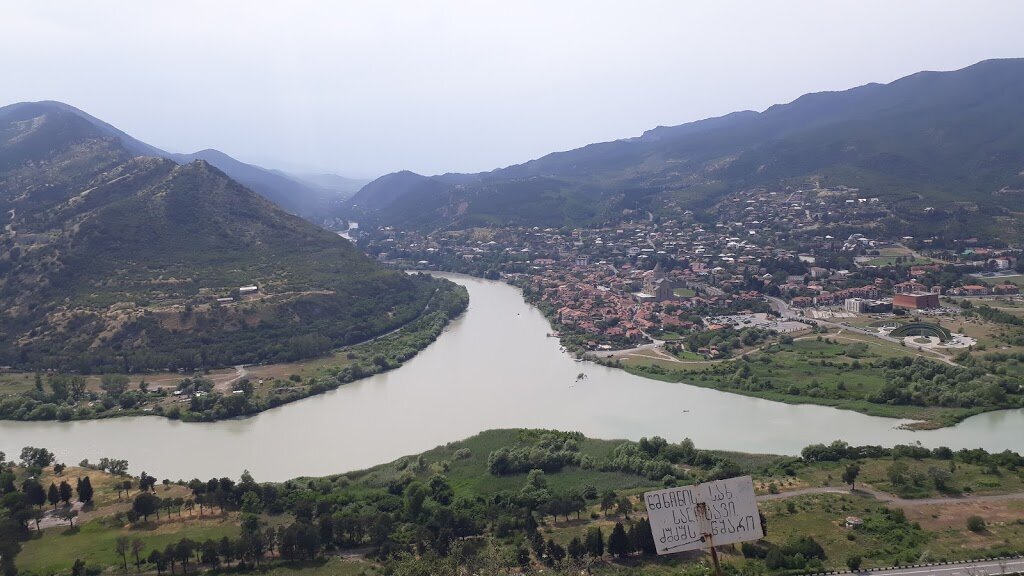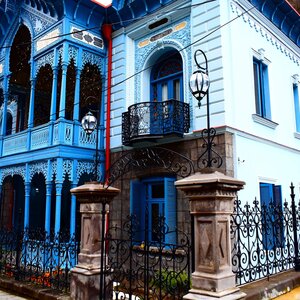The best way to do this is to rent a car, but all places can also be reached by public transportation.
Mtskheta, the ancient capital
Mtskheta was the capital of the Georgian state until the beginning of the VI century. It was already inhabited in the III–II centuries B.C. and was a significant cultural and economic center, with important trade routes passing through it. From the 1st century B.C. a strong flow of Middle Eastern culture entered the ancient capital, which was reflected in the modern appearance of the city, in its ethnographic diversity, festivals, and the quiet measuredness of urban life.
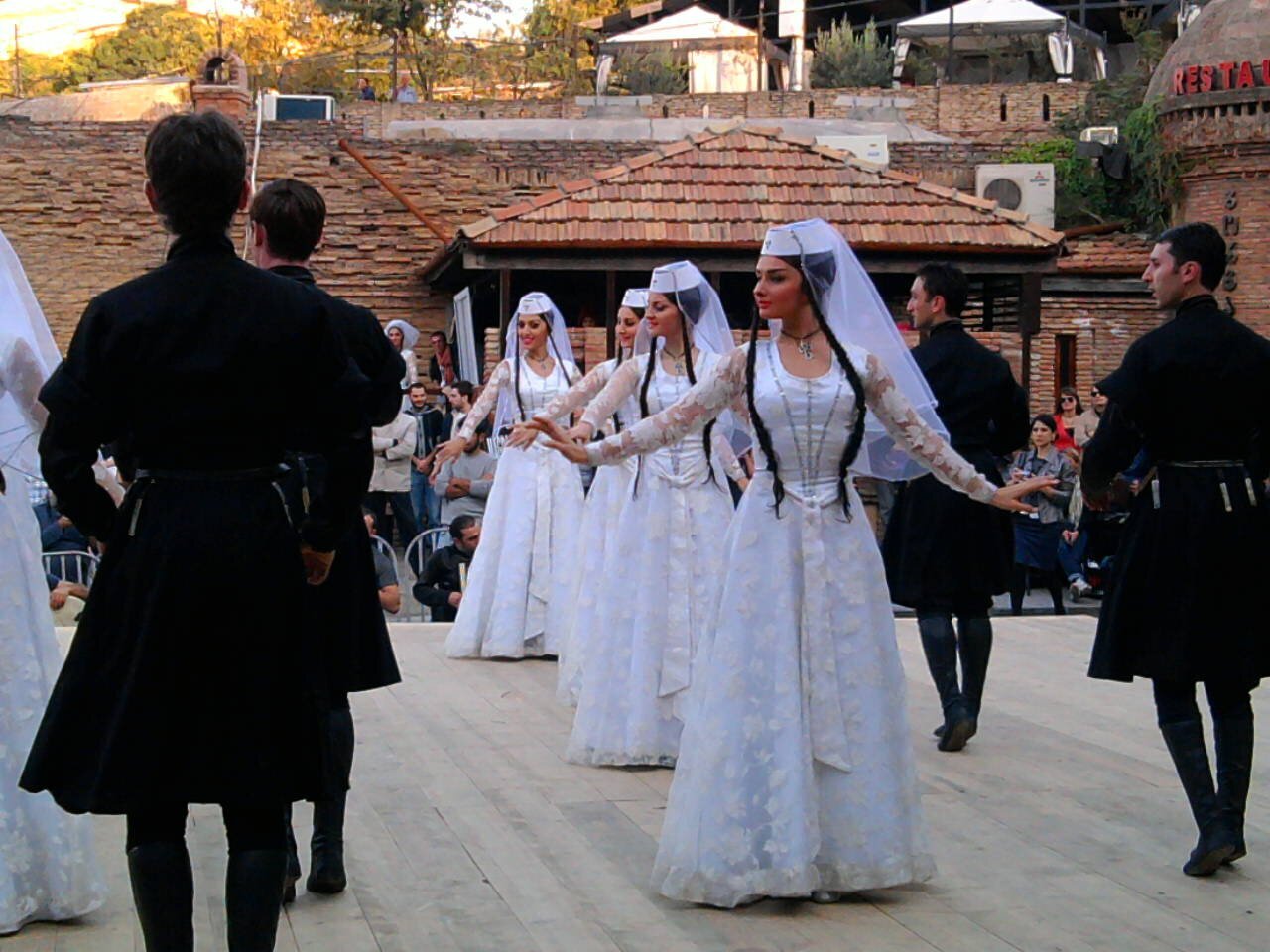
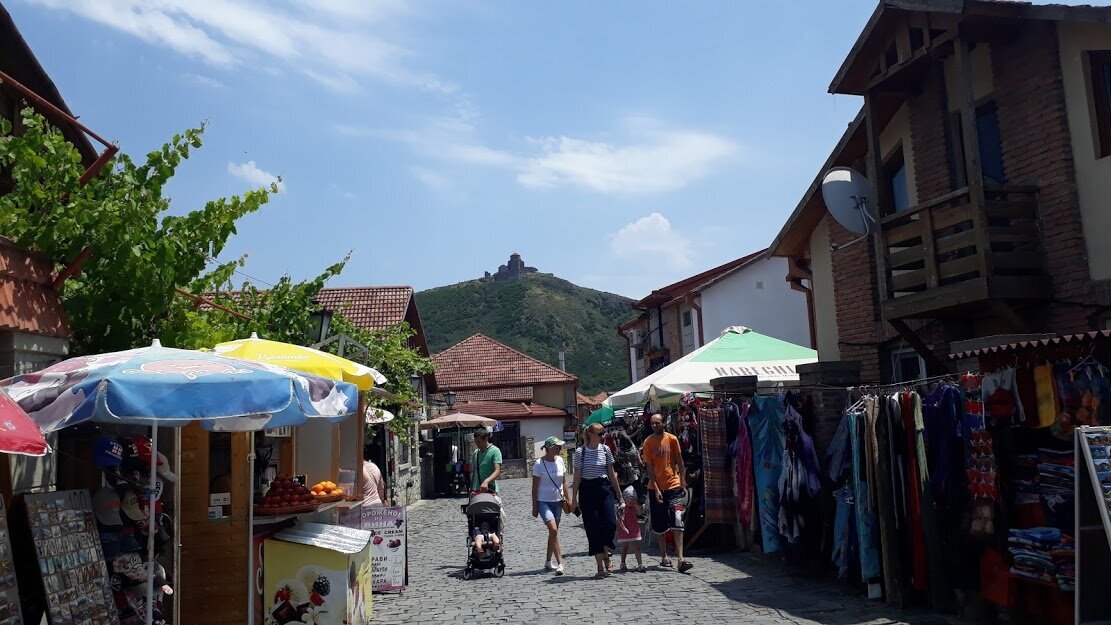
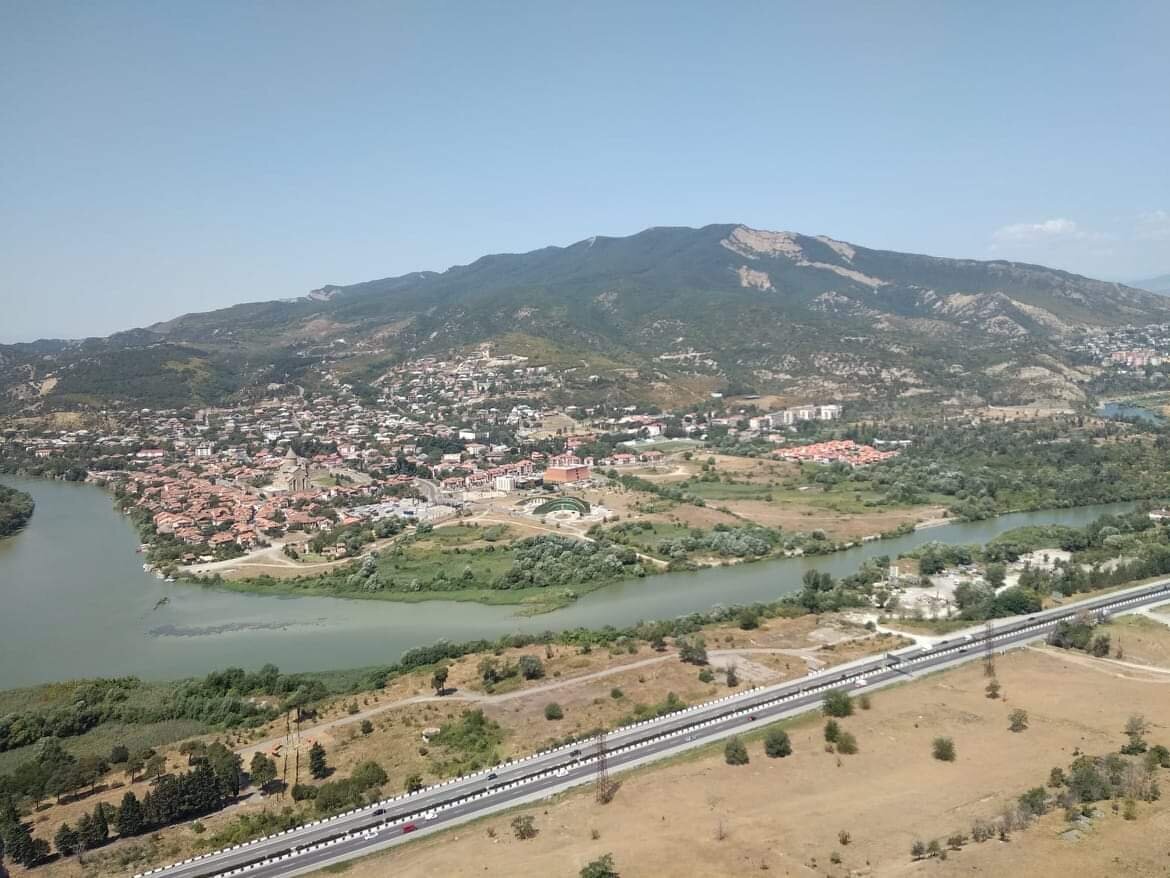
Today, this small picturesque town with a population of no more than 10,000 people has been restored in the best traditions of the time, preserving its traditional features and style. Its cozy streets are full of souvenir shops, where you can buy homemade wine and chacha, churchkhela, honey and fresh fruit.
Traditional Georgian souvenirs are also sold here: cloisonné enamel items, «horns» for Georgian feasts, daggers, paintings and national clothing. In the air is the aroma of hot Georgian bread «shoti», small restaurants offer hot khinkali and khachapuri. What else to try in Georgia
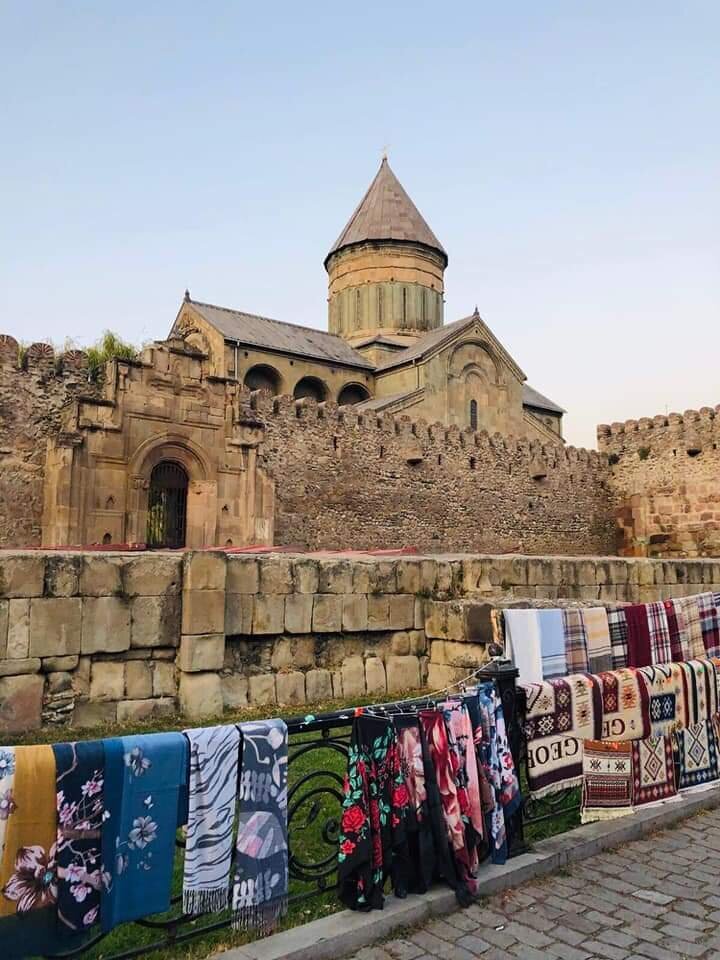
Mtskheta is located 15 kilometers from Tbilisi and can be reached by shuttle bus from any bus station in Tbilisi.
- The marshrutkas are without numbers, the stencil says «Tbilisi-Mtskheta».
- They run every 10 minutes from 7:00 a.m. to 10:00 p.m.
- The cost is 1 GEL.
Svetitskhoveli Cathedral
The most important attraction in Mtskheta can be confidently called Svetitskhoveli Cathedral. It is the main cathedral of Georgian Christianity, an architectural monument of the XI century. A part of Christ’s chiton is buried here, and the history of the construction of the temple is connected with it.
According to legend, Elioz, a Jew from Mtskheta, was present at the burial of Christ and discreetly cut off a piece of his chiton, which he brought back with him. He told the story of the crucifixion to his sister Sidonia. As she listened, the maiden died of anxiety, never letting go of the chiton. With the chiton she was buried. In time, at the place of burial of Sidonia grew cypress, which exuded a divine fragrance and myrrh flowed. The pillar of life-giving, erected from a cypress cut for the basilica had life-giving power, the blind near it received sight, and those lying down stood up.
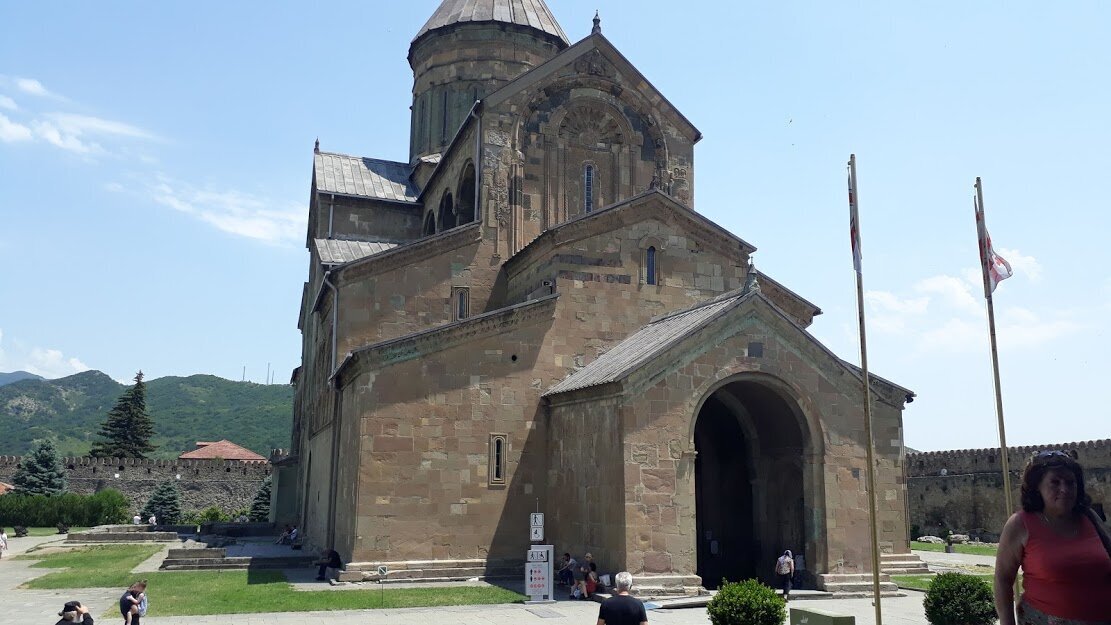
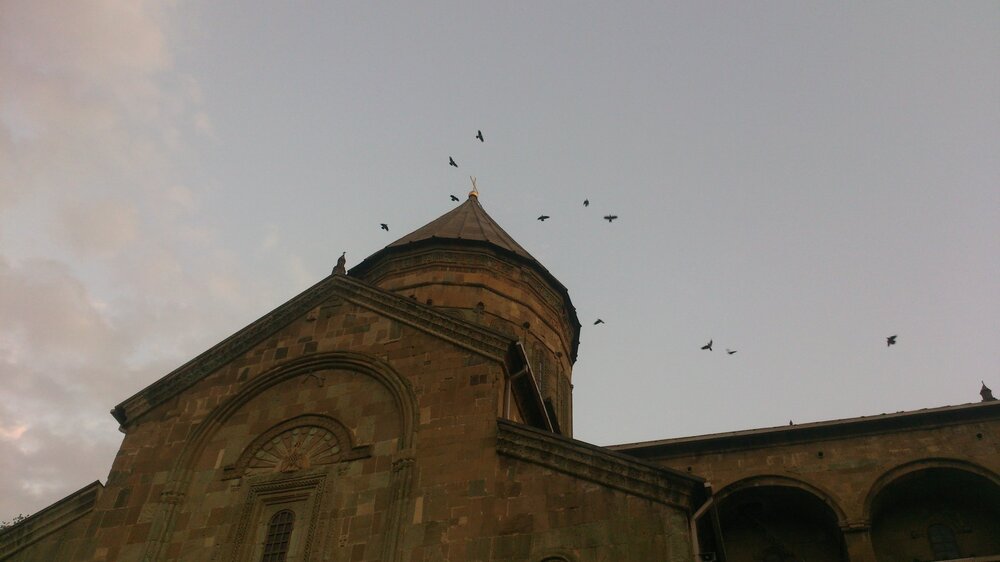
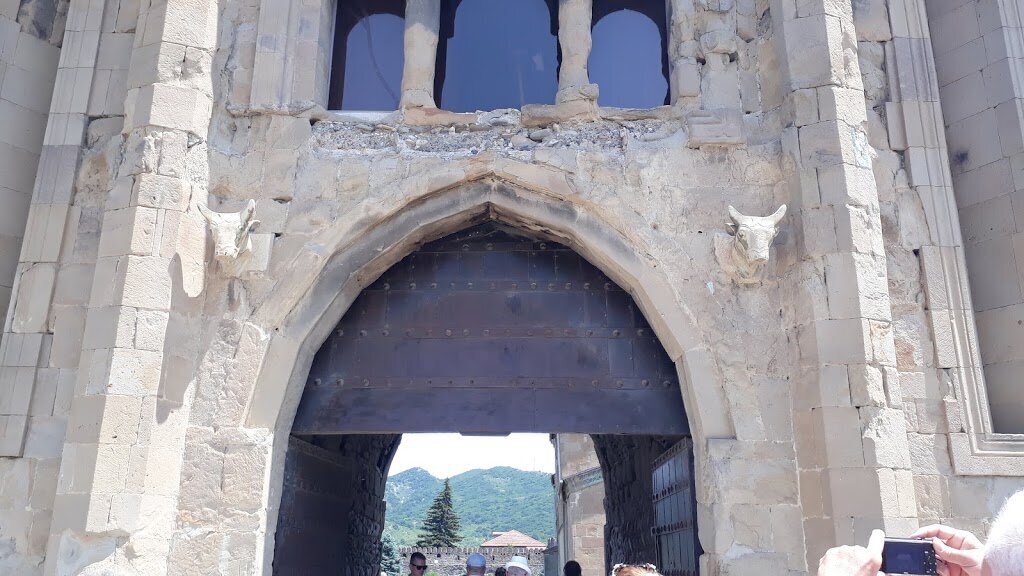
In 1010—1029 a cathedral church was erected on the place of the old wooden basilica. The architect Konstantin Arsakidze, who created such beauty, was deprived of his right hand by order of Tsar George I so that he could never build anything like it again. The bas-relief of the severed right hand of the great master together with the instrument can be seen today on one of the walls of the cathedral. This story was described in the novel «The Hand of the Great Master» by the Georgian writer Konstantin Gamsakhurdia.
Svetitskhoveli Cathedral is located in the very center of Mtskheta and is visible from all sides. It is impossible to approach the cathedral itself by vehicle, as the area around the temple is a pedestrian zone.
The service in the temple usually starts from 08 am, and 20:00 the entrance to the cathedral itself is closed.
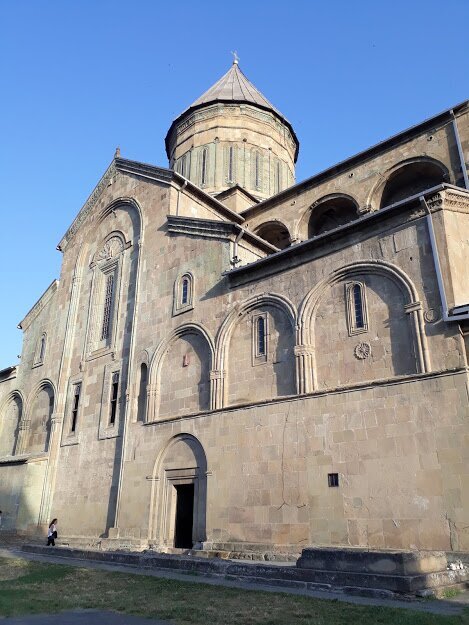
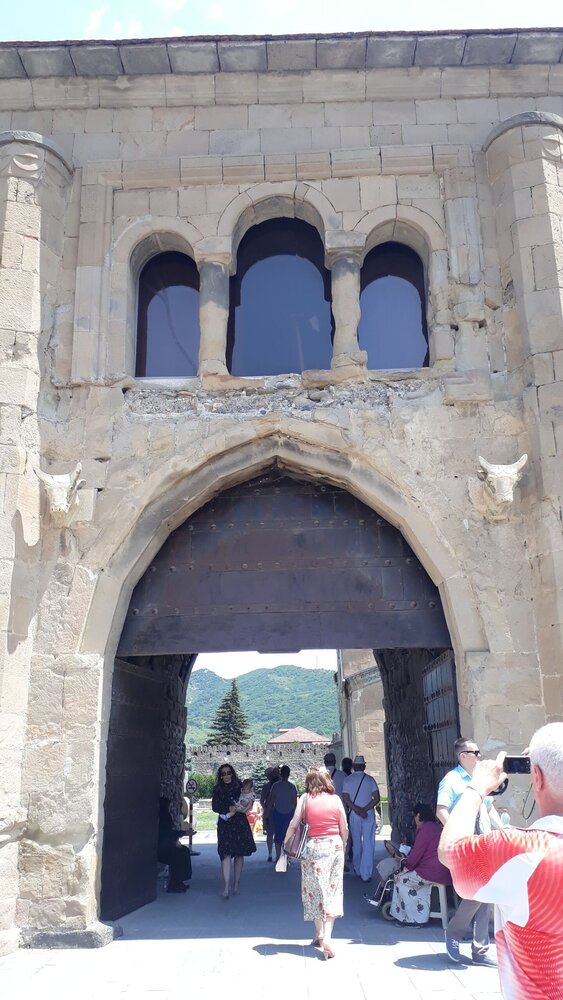
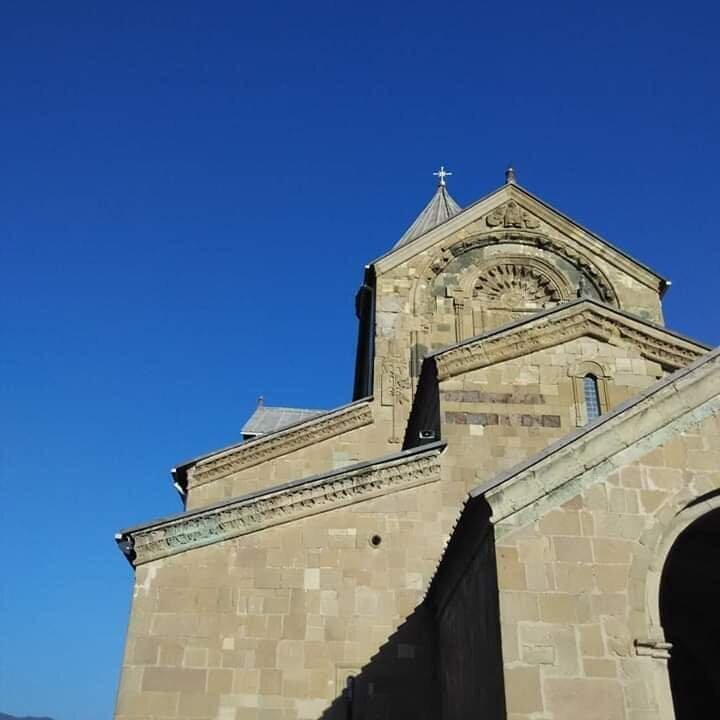
Jvari Monastery
Jvari Monastery is located on the top of a mountain, 16 kilometers from Mtskheta and 25 from Tbilisi. Its construction dates back to the VI century and is associated with St. Nino, who brought Christianity to Georgia.
According to legend, it was on the top of the mountain above the place where the Kura and Aragvi rivers merge that she erected the first cross, where the Jvari Monastery was later built. The cross was made of a strange tree that grew on this place and was fragrant. The locals considered this tree miraculous, as wounded animals tasted its leaves and were healed. Three crosses were made from the tree, one of which is located in the Jvari Monastery («cross», Georgian).
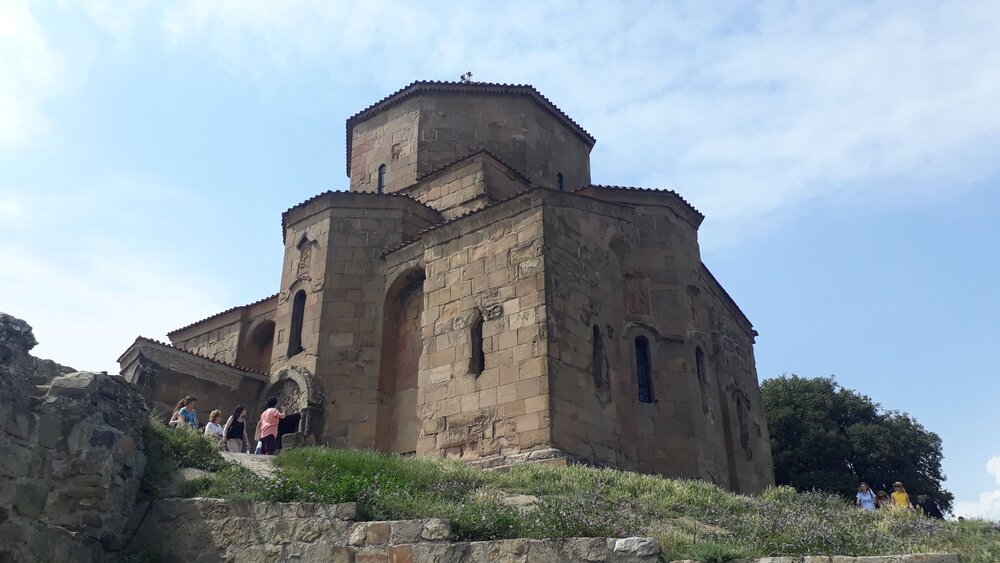
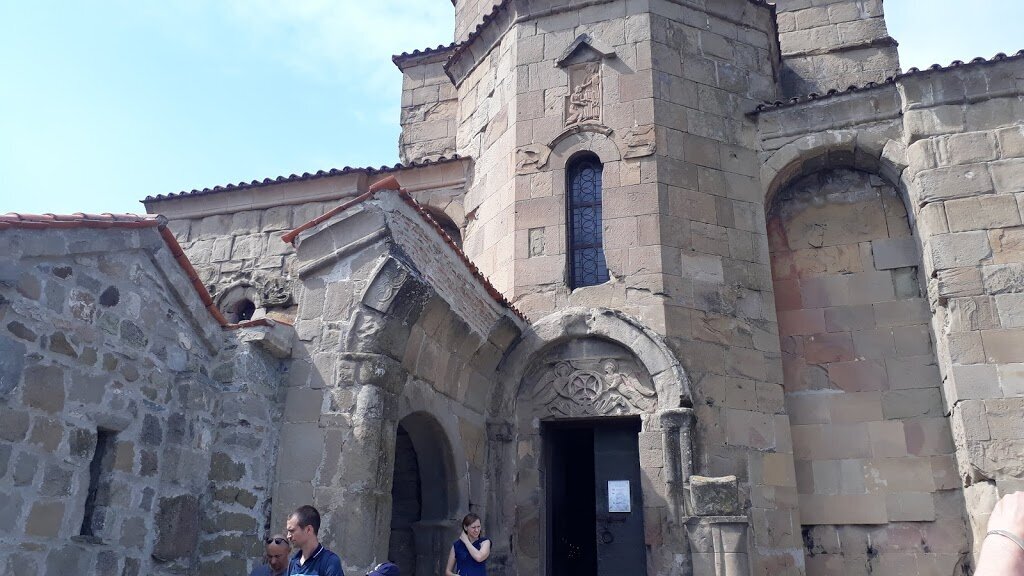

From the height of the monastery you can see the view of Mtskheta and the unforgettable landscape described by Lermontov:
«A few years ago,
«Where the noise of the two sisters merged,
«embraced like two sisters,
«The streams of the Aragva and the Kura,
There was a monastery.»
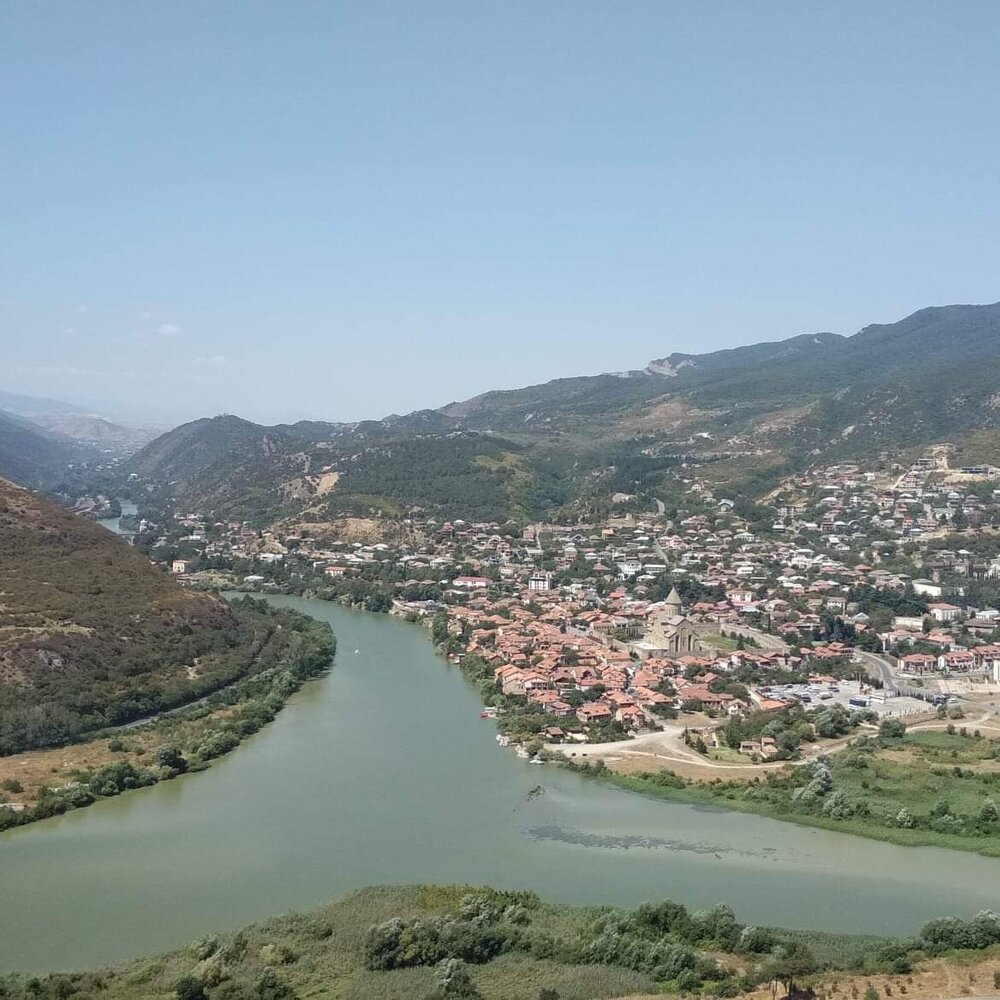
How to get to Jvari:
- By bus #121 from Okriba Didube bus station, there is also bus route #11 nearby (cost is GEL 0.5).
- Cab from Mtskheta will take you for 10 GEL, from Tbilisi you may be asked twice as much.
- The entrance to the monastery closes at 20:00 in summer, a little earlier in winter.
Ananuri Fortress
Ananuri fortress is located 65 kilometers from Tbilisi, on the picturesque military-Georgian road. It is a whole complex built in XIV–XVIII centuries. At that time the main function of the fortress was to protect the inhabitants from the attacks of enemies from the Daryal Gorge. By the end of the 18th century, important trade routes crossed here, and Ananuri became the residence of Georgian kings.
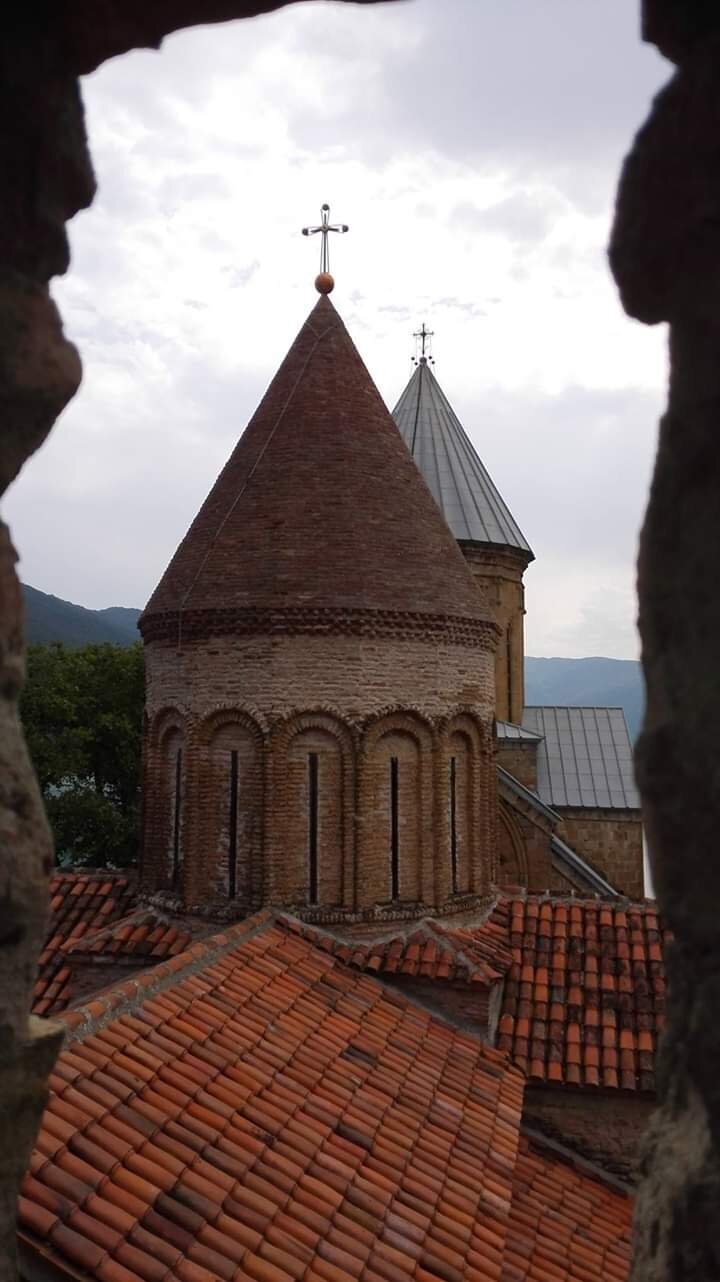
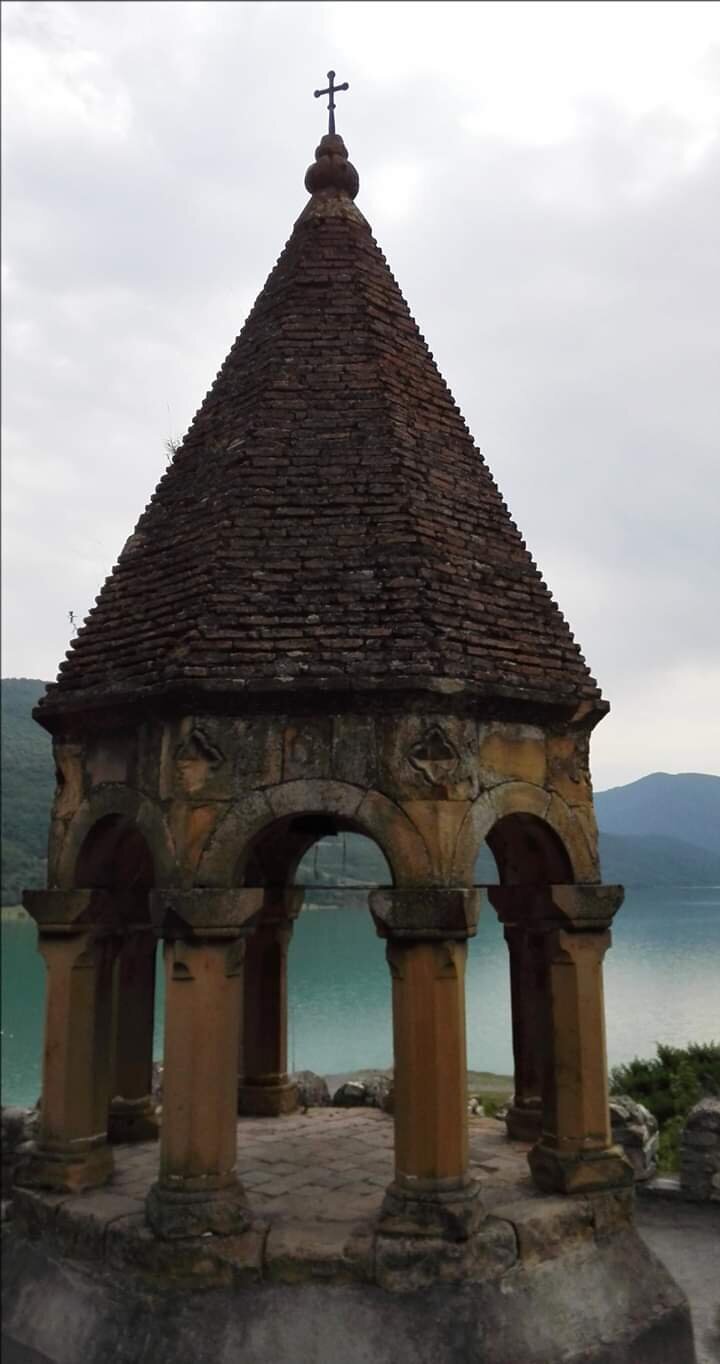
The defense towers and temples of the complex are well preserved. On the walls one can see non-traditional for Georgian church architecture paintings, vines, and a bas-relief on one of the walls of the Church of the Assumption of the Virgin describes the history of its construction.
You can get to Ananuri by shuttle bus from Tbilisi bus station:
- Direction — Kazbegi or Zhinvali;
- The cost is 5 GEL and it takes a little over 1 hour to drive;
- Admission to the complex is free, and the gates close by 8:00 pm.

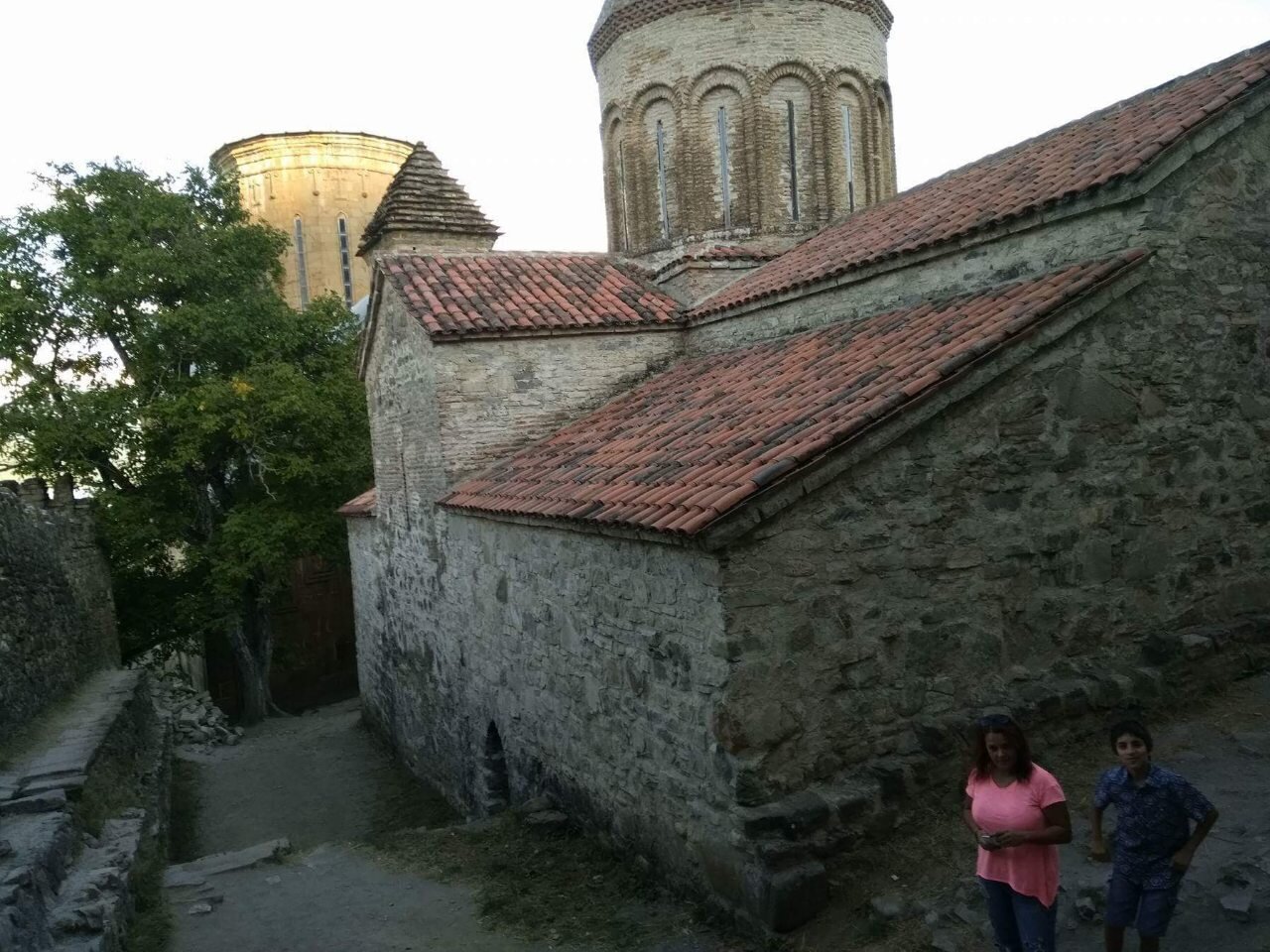
Today, Ananuri is located right on the shore of the Zhinvali Reservoir, which offers truly fantastic views. Turquoise water surrounded by velvet emerald mountains: in the warm season you can swim, go boating, fish or barbecue in the fresh air.
At the entrance to the complex there are many shops with souvenirs, locals sell cold drinks and hot coffee brewed on the sand. On the road to Ananuri there are many home-style restaurants, where you should try khinkali «in Pasanauri style» and khachapuri «home-style».
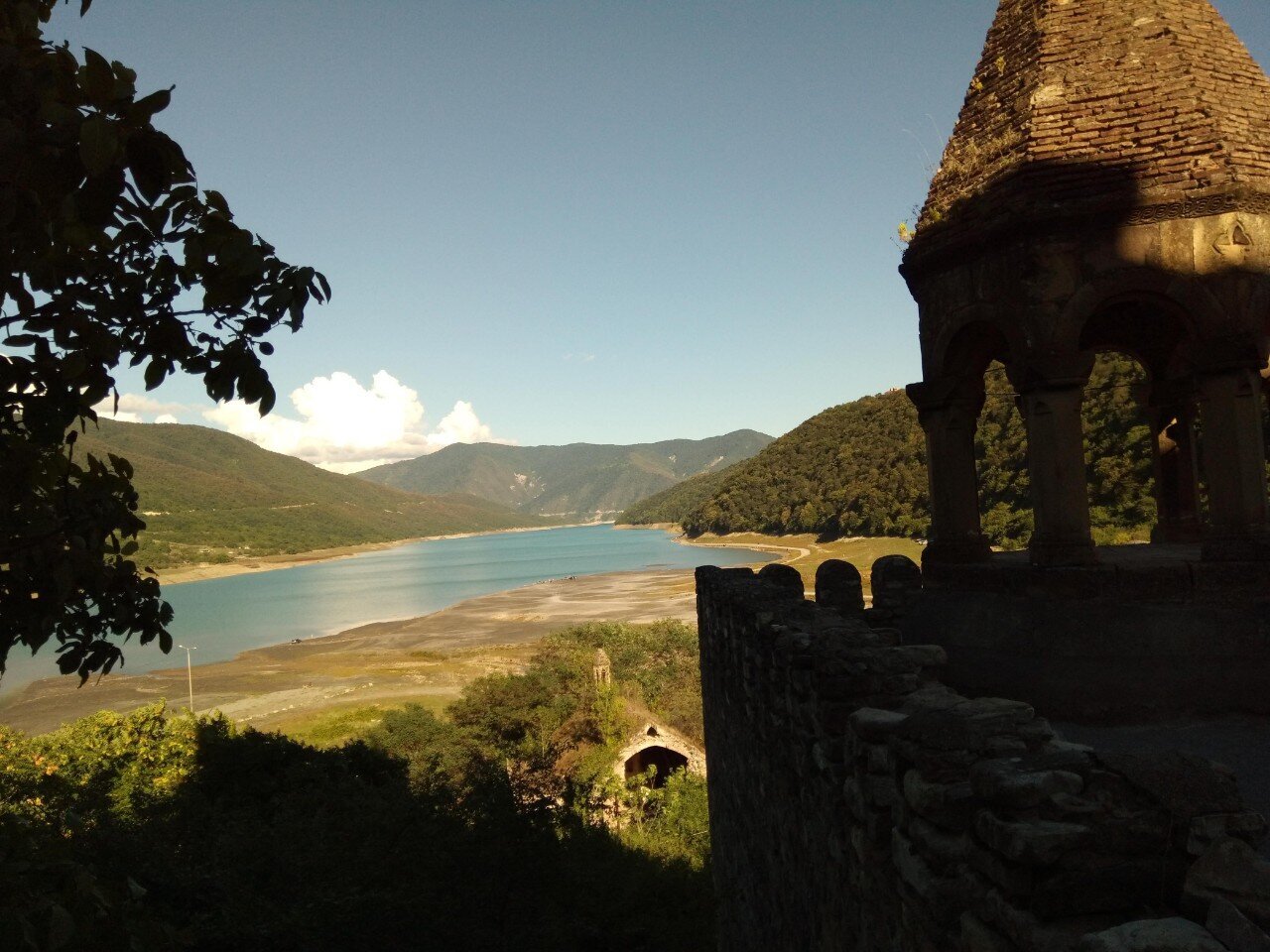
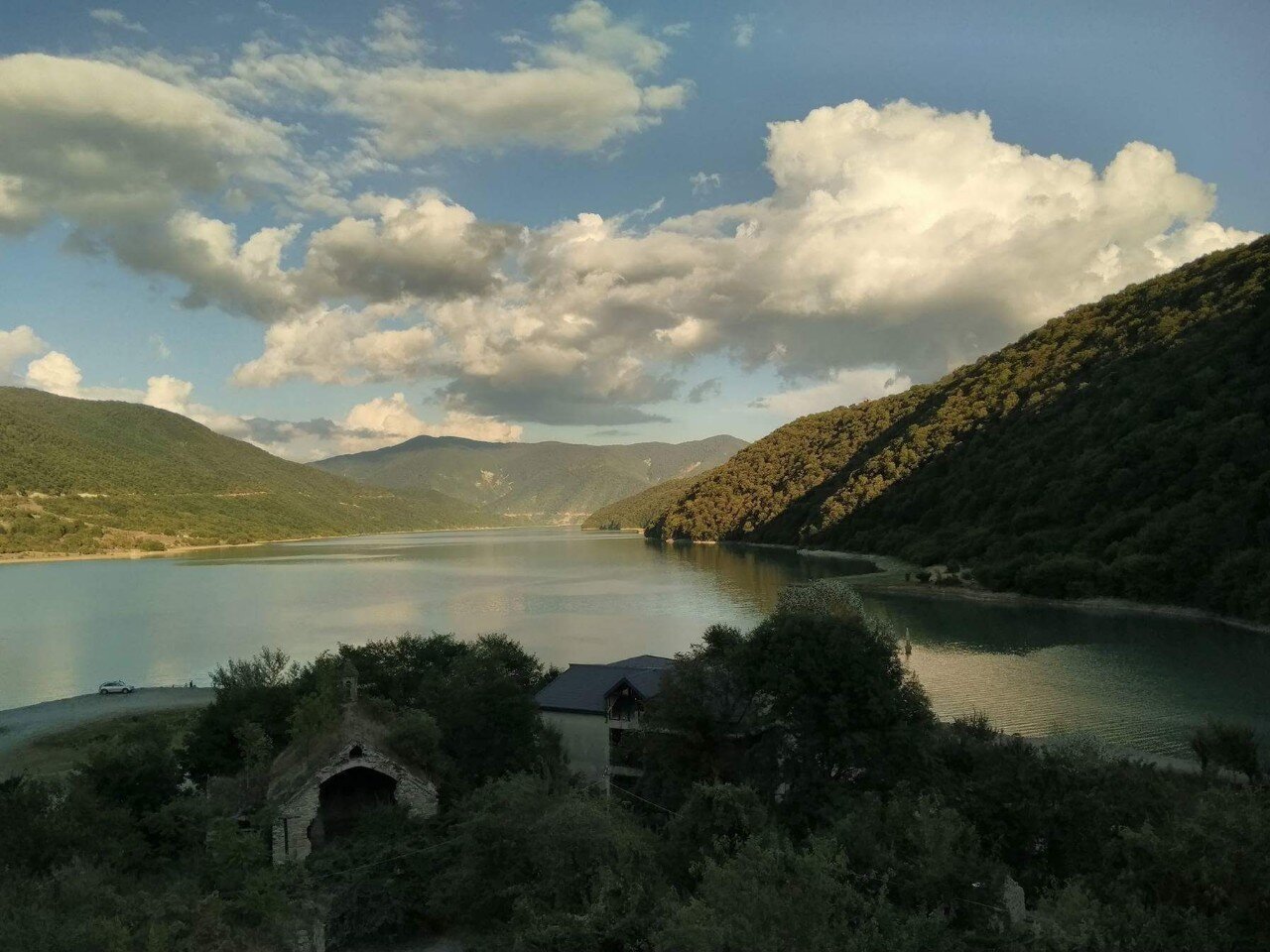

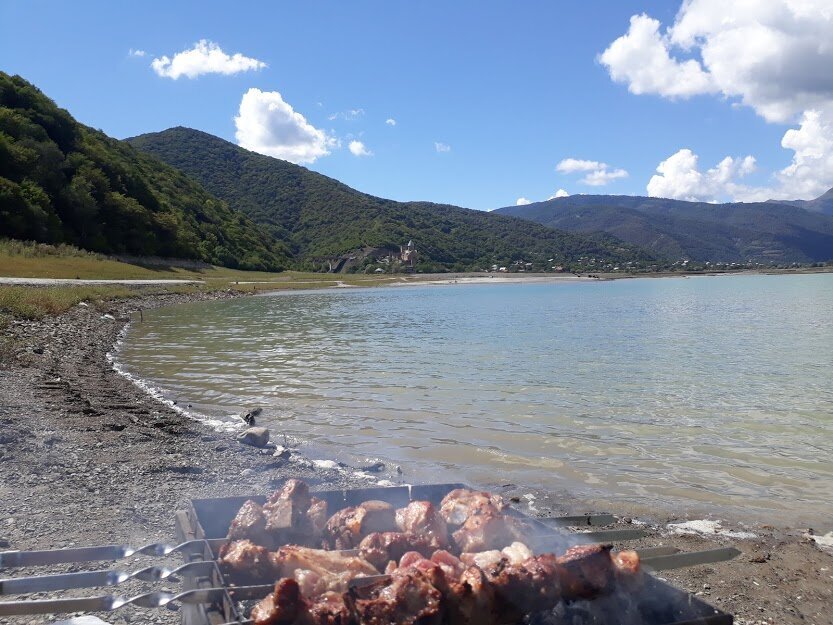
Uplistsikhe cave town
Uplistsikhe is one of the oldest cave towns in Georgia. The first mention of it can be found in records dating back to the 7th century. And the buildings themselves date back to VI–IV centuries BC. Architects assume that so far less than 30% of the entire territory of the city in the rock has been excavated.
It is a whole labyrinth of rooms, open and hidden, carved right into the rock. It is an unforgettable experience, as if time takes you back several centuries. In each of the rooms you can enter, stand, the signs will let you know what the purpose of this or that room was. It could be a reception hall, an apothecary, a meeting room, a storehouse for grain or wine, a prayer room or a room where a hearth was kept. There are streets, squares and even a secret tunnel that leads directly to the banks of the Kura River.
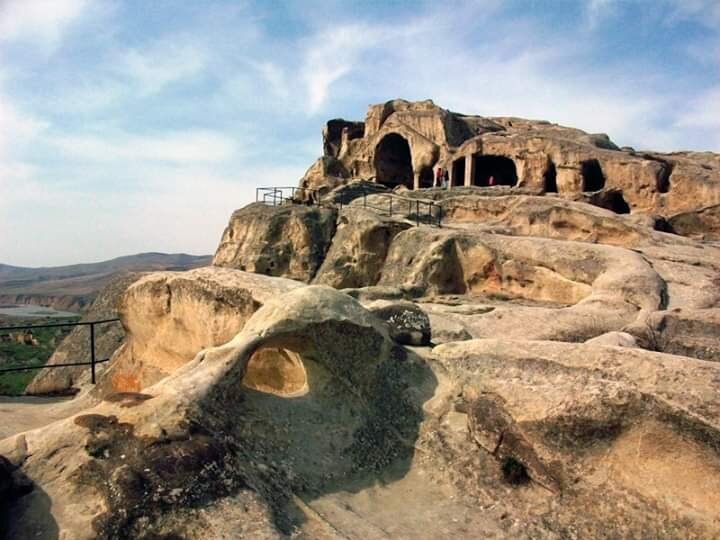
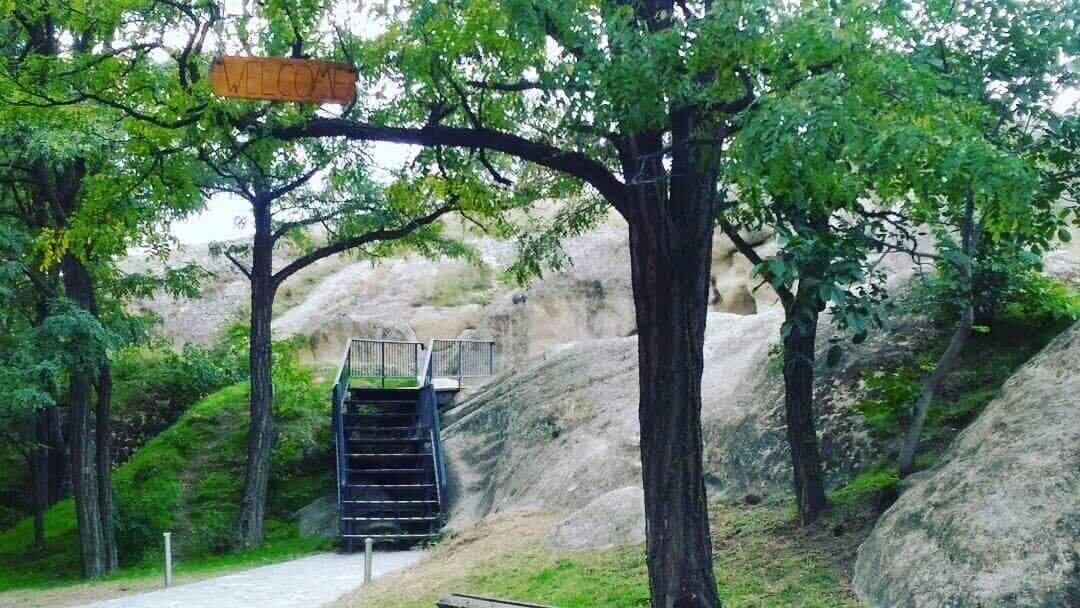
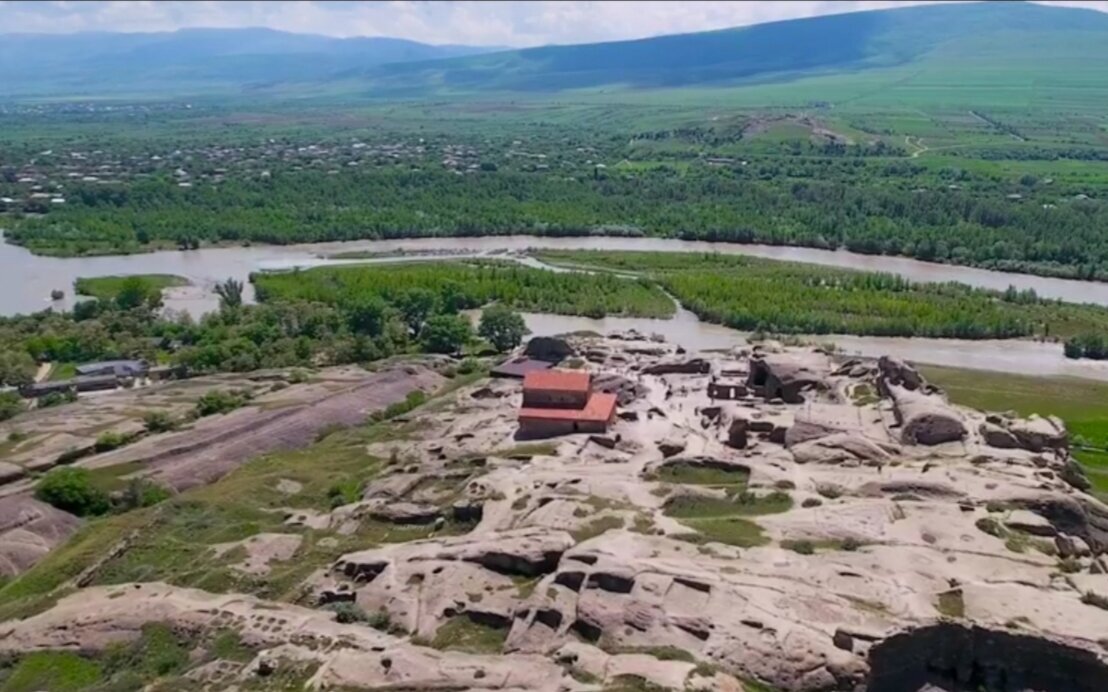
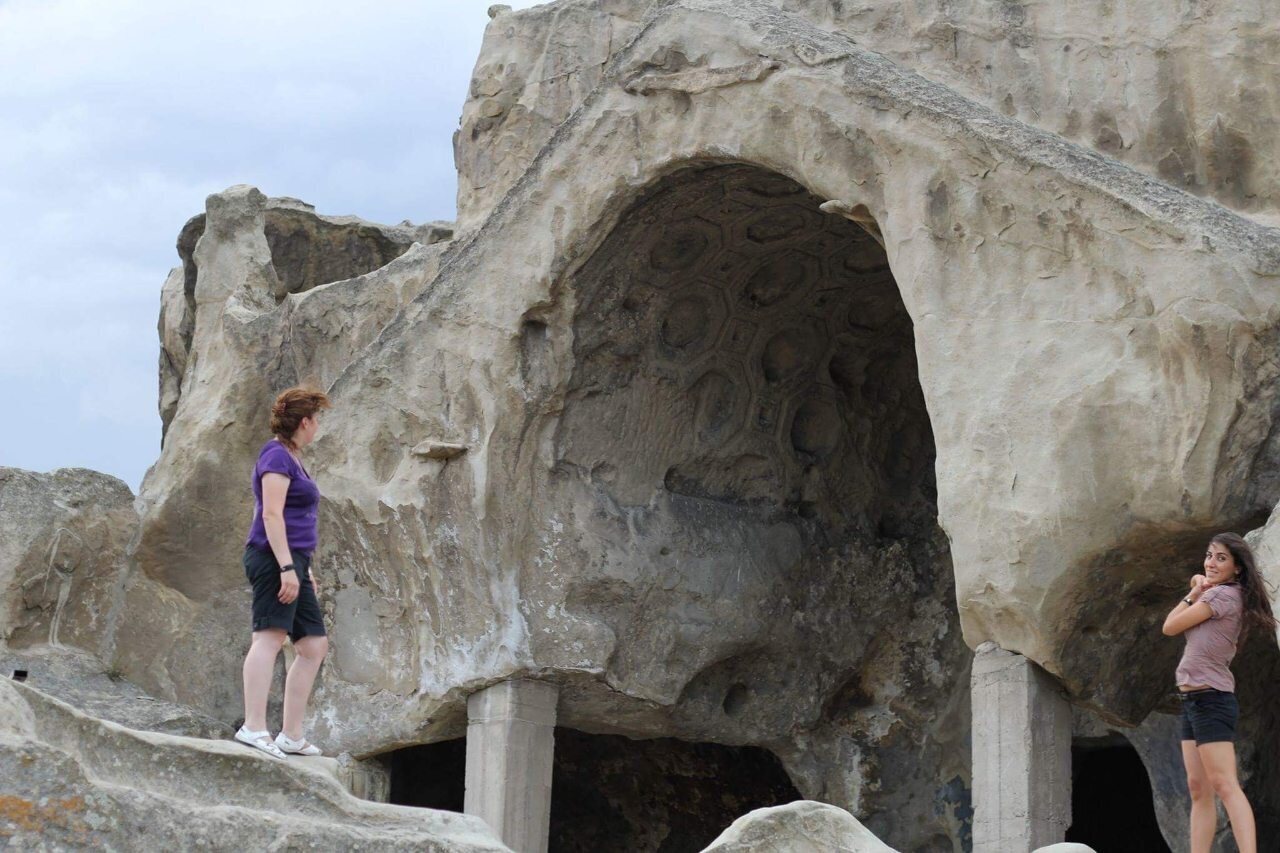
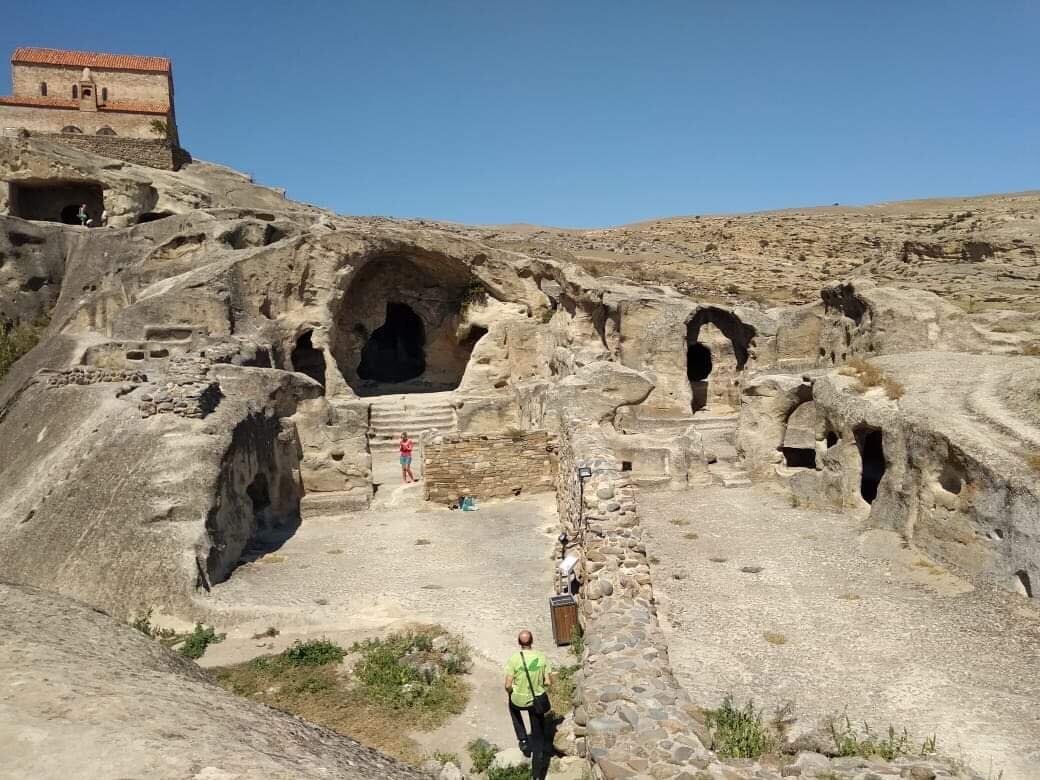
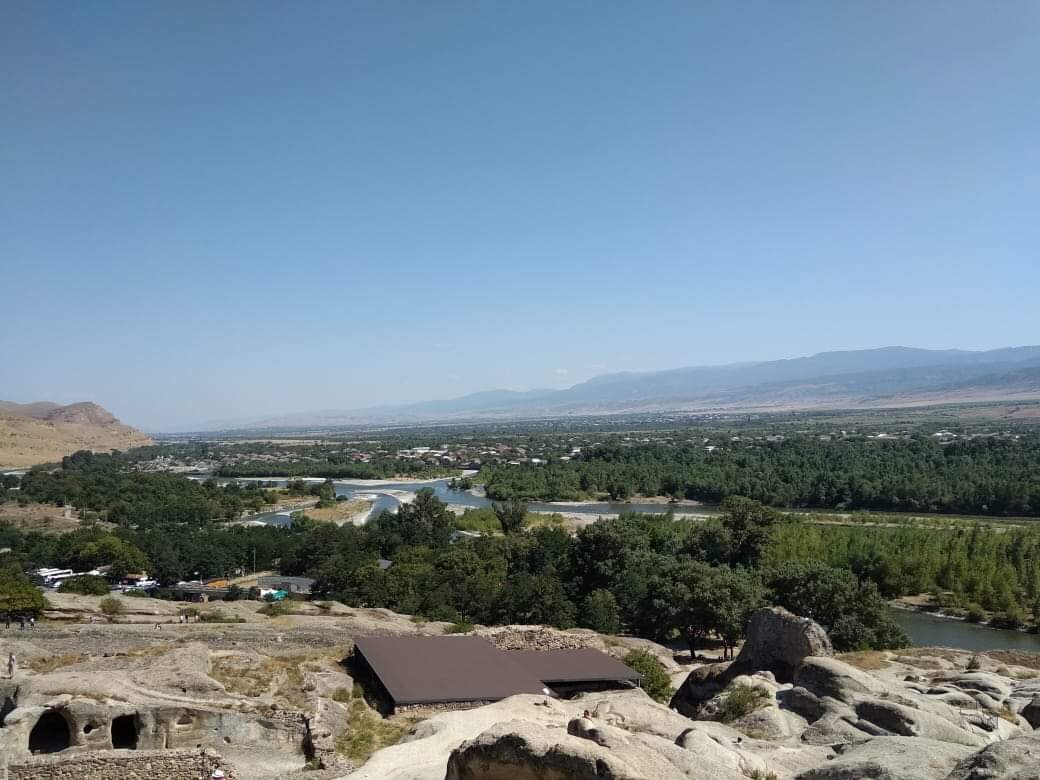
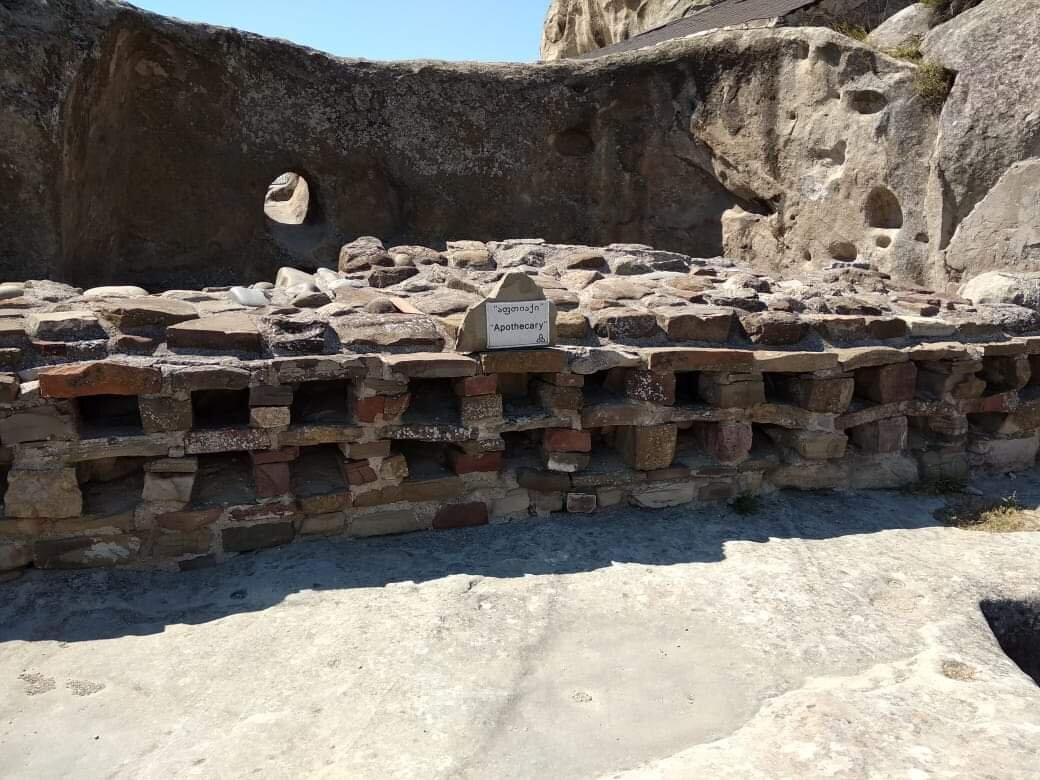
There is a legend that the city in the rock was built by slaves. They were given a pickaxe, one half of which was iron and the other half gold. They had to work with the iron side. When the iron was finished, the slave was freed, leaving him with the gold side. This shows two things: that a huge amount of labor was put into the construction of the city, and that so much gold was mined in Georgia that the legend of the golden fleece may be close to the truth.
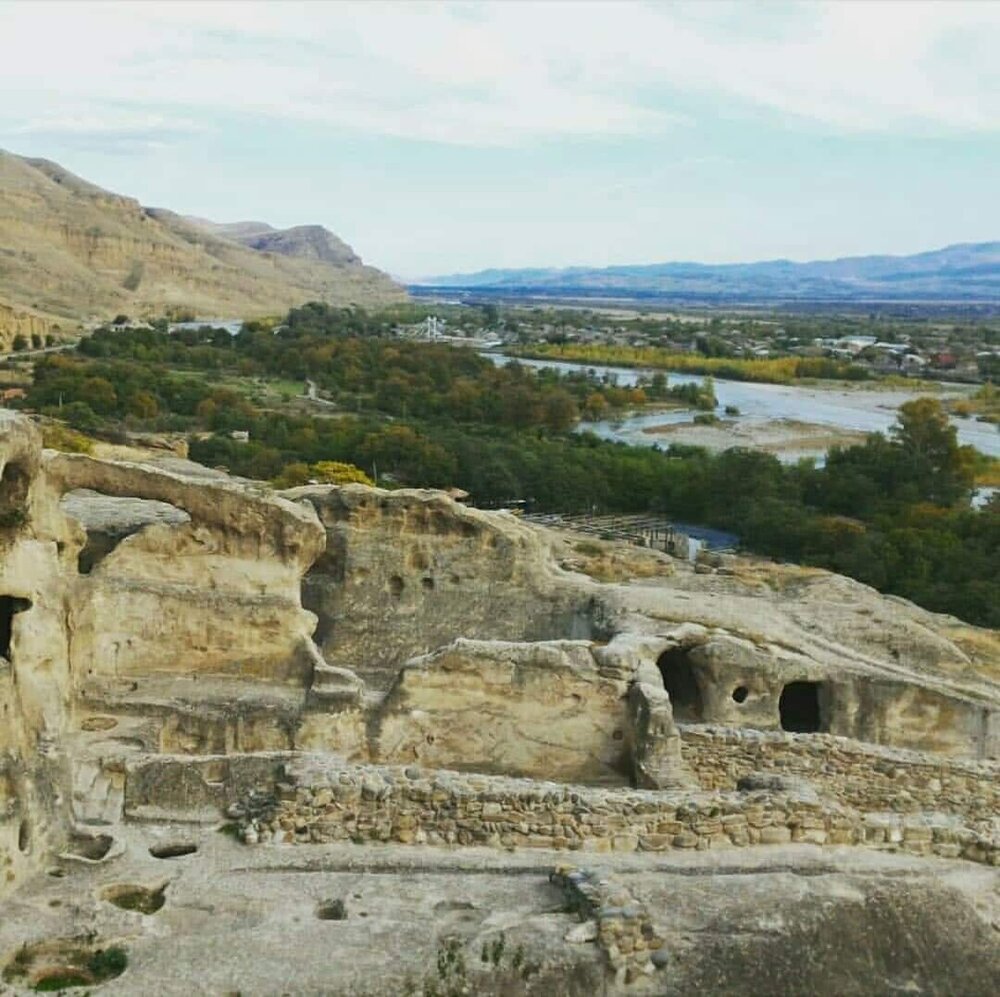

Similar architectural monuments in Georgia can be observed in Vardzia and David Gareji. Be careful, some sections are quite high and there is a danger of slipping on rocks, especially in wet weather.
Uplistsikhe is located 10 km from the city of Gori, Stalin’s birthplace, and 110 km from Tbilisi.
- Entrance is paid — 7 GEL;
- Open from 10:00 a.m. to 6:00 p.m;
- Children under 6 years old are free of charge;
- Audio guide — 15 GEL.
There is no direct flight from Tbilisi, but from Okriba Didube bus station there is a shuttle bus from morning to evening to Gori (3 GEL), from where you can take a shuttle bus to the village of Kvakhvreli (1.5 GEL). The Tbilisi — Borjomi train also stops in this village; it leaves every day from the central station at 7 am and costs 2 GEL.

